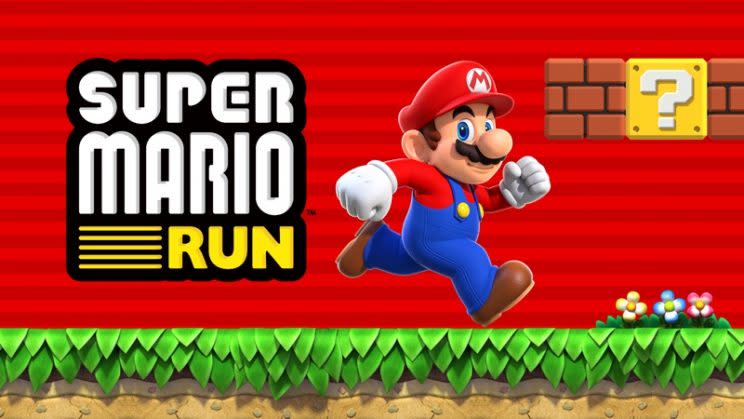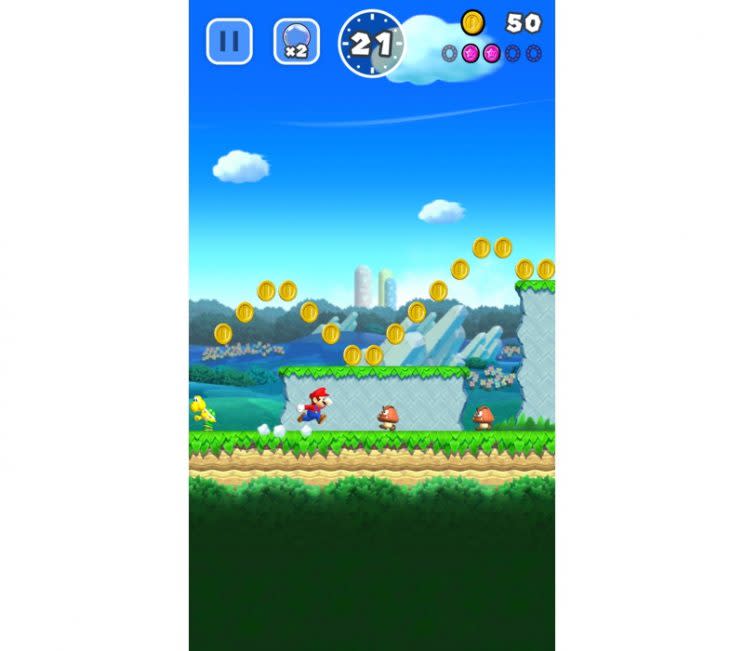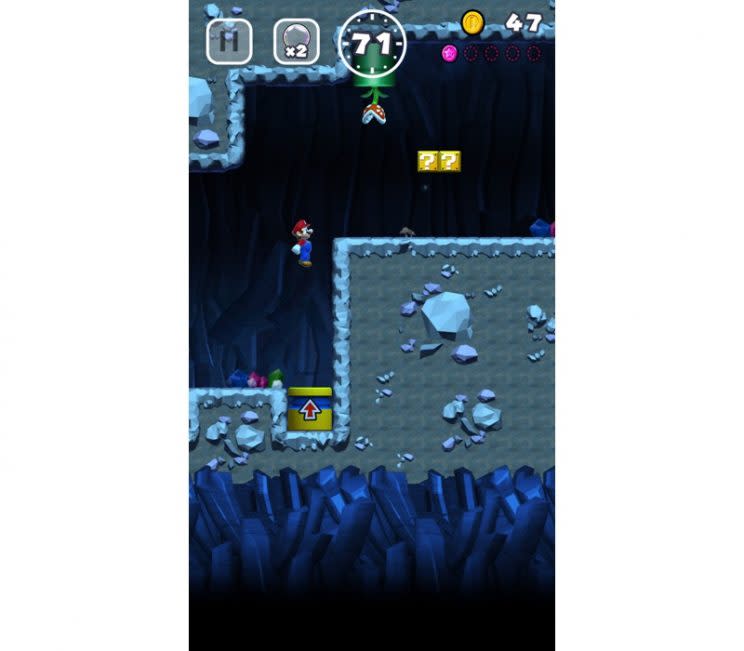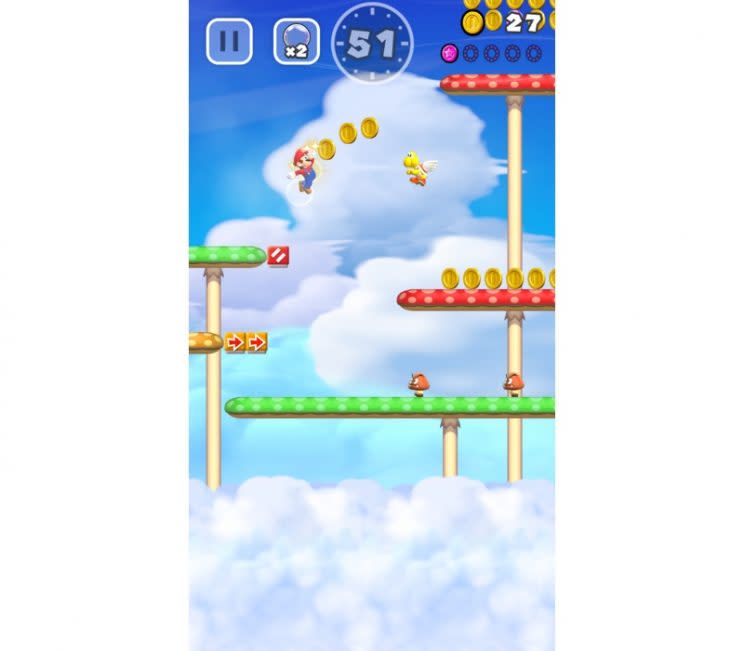Super Mario's creator explains how 'Super Mario Run' will reach a new generation

Since his debut more than 30 years ago in the original “Donkey Kong,” Nintendo’s Mario has appeared in more than 200 different games, become an international icon and turned Nintendo into a household name. And now he’s coming to your smartphone.
Launching Dec. 15 for Apple’s iPhone and iPad and coming to Android devices in the near future, “Super Mario Run” is the first Mario game for any smartphone platform. Available for $9.99, “Super Mario Run” features three game modes: World Tour, Toad Rally and Kingdom Builder.
I played a 30-minute demo of the game and spoke with Mario’s creator Shigeru Miyamoto about how the game came together, what it means for Nintendo and how he hopes it will bring Mario to even more people around the world.
The basics
How about this: “Super Mario Run” isn’t your typical Mario game, which let you use a controller to manipulate where Mario runs, jumps, and shoots fireballs. Rather, “Run” simply lets you control when and how he jumps.
The thought processes behind this, Miyamoto explained, was to allow people to play the game with one hand, while commuting for instance, and to make it more approachable for first-time gamers.

That’s especially important considering that “Super Mario Run” will be available in some 150 countries this year. Compare that to typical Mario games for Nintendo’s traditional consoles, which are released in about 30 countries, coupled with the massive number of smartphones on the market, and you can understand why the company worked to ensure “Super Mario Run” is as accessible as possible.
During my playthrough I ran through five World Tour courses, which see the titular portly plumber run from left to right until he reaches the flagpole marking the end of the level. Along the way Mario will automatically vault over small barriers and enemies like Goombas, those sentient mushrooms with teeth. If you want him to jump to reach coins, you simply tap the screen. To jump higher, you long press the screen. It’s all very simple really, but that’s just scratching the surface.

The real fun begins when you realize that you can double jump, bounce off walls, and fly backwards off special platforms that send you rocketing backwards. Mario’s animations are smooth and fluid and look as good as anything Nintendo has built for its 3DS handheld and Wii U home consoles.
The ultimate goal of each World Tour level is to grab as many coins as possible and finish with a high score in order to gain rally tickets to play “Super Mario Run’s” Toad Rally mode.
Rally and ride
Toad Rally is where things get really interesting. Using the tickets you earned by playing World Tour, you race against friends in an effort to outscore them by grabbing coins and jumping on enemies.
You don’t compete directly against friends in Toad Rally, though. Rather, you compete against their previous records. As you dash through each timed course, you’ll see a ghost of your friend’s character competing the same run. The ghost player can’t interact with you at all, but it does give you some extra incentive to get a move on.

Nintendo has always had a problematic relationship with online gaming, but the company has really figured it out with “Super Mario Run.” To challenge a friend to a Toad Rally match, you can simply text or email them from the game. You can also lay down the gauntlet through Facebook and Twitter.
The main objective of beating your friends in Toad Rally, beyond bragging rights, is to sway as many toads — those mushroom hat-wearing guys that run around Mario’s world — to join your personal kingdom.
My kingdom for a 1up
“Super Mario Run’s” Kingdom Builder lets you create your own Mario kingdom. The idea, Miyamoto said, was to give gamers the opportunity to create their own versions of the kingdom maps found in virtually every Mario game. From here you can purchase tiny mushroom houses for your toads, decorations such as giant bushes and trees and special rooms that unlock specific characters.

Buying a Luigi house, for example, unlocks Mario’s brother Luigi as a playable character. You can do the same to get a Yoshi hose, Mario’s faithful dinosaur friend. Additional characters will be available to unlock, though Nintendo doesn’t want to spoil the surprise by telling us whom we can expect to see in the game.
Mario’s legacy
“Super Mario Run” is expected to be a huge hit for Nintendo, and Apple, when it hits the App Store Dec. 15. According to Sensor Tower, the game could rake in as much as $71 million in its first month. That’s a lot of coin. But when you take a look at the payment model for “Super Mario Run,” it’s clear the Nintendo could have milked its fans for millions more if, instead of charging $9.99 up front, the company chose to go with a traditional free-to-play mobile model.
Free-to-play games, like “Candy Crush Saga,” are free to download and play for a certain amount of time, but often push you to pay small fees to play longer or get special in-game items. Companies like Zynga and Supercell have used the free-to-play, or freemium, model for to varying degrees of success for years.

Why didn’t Nintendo do the same with “Super Mario Run?” Because, as Miyamoto put it, Nintendo wanted to make sure a lot of people could play “Mario Run” by paying a little up front, rather than give few people the ability to play more by paying a lot over time. Miyamoto says he hopes the model catches on among consumers, as many companies are unable to fully recoup the development costs of their titles through free-to-play games, leaving just a small number of successful companies.
Charging a set price, Miyamoto said, will also help parents, as they simply have to pay one time to get the full game and not have to worry about their kids spending hundreds of dollars on in-app purchases.
If the success of “Pokémon Go” is any indication, “Super Mario Run” should prove to be a huge hit among both current fans, those looking for a trip down memory lane and newcomers alike. Get ready to jump for joy.
More from Dan:
T-Mobile is trying to revolutionize the way you use your phone number
Facebook launches new Messenger games that will transport you to the 80’s
‘Pokemon Sun’ and ‘Moon’ review: 20 years later and it’s still as addictive as ever
Email Daniel at [email protected]; follow him on Twitter at @DanielHowley.
